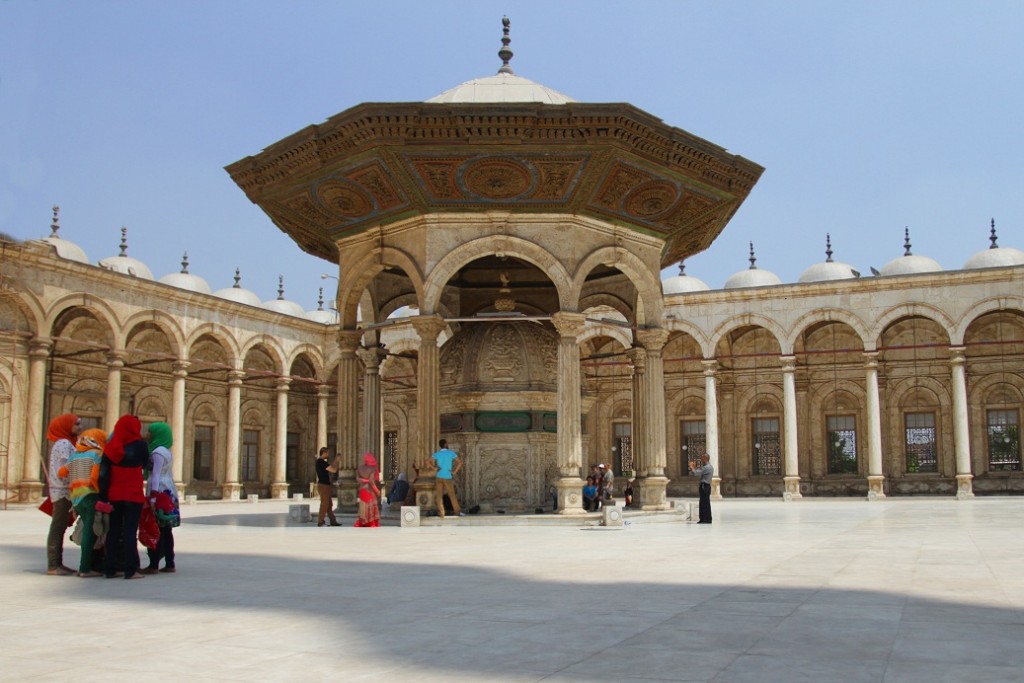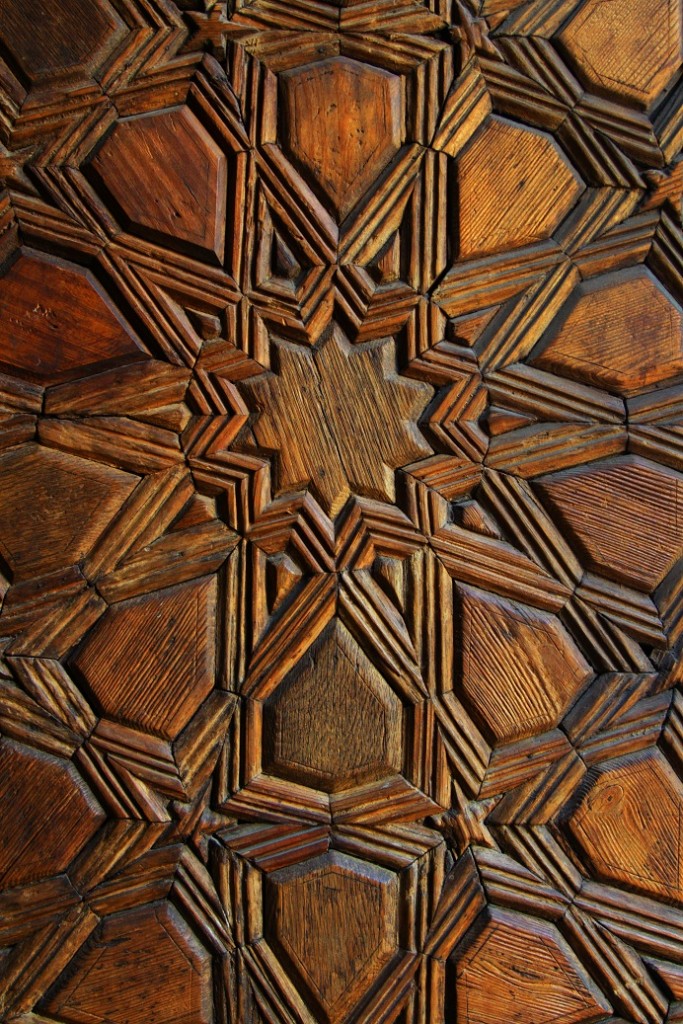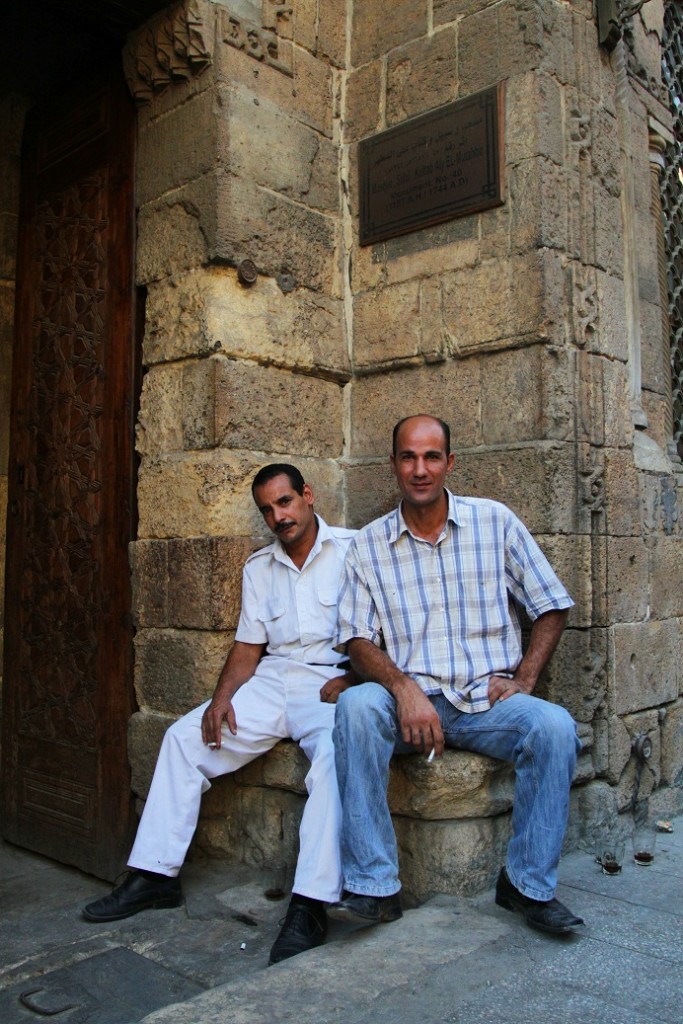
Photo by Rachel Adams
I always like to start a trip to a new city with a climb up a local hill. Cairo’s Citadel complex, to the east of the Nile and south of the centre, not only gives you a great view of the metropolis from the fascinating Islamic side, but also a glimpse of the city’s Saladin and Ayubbid eras. And on a good day, it offers rich people-watching opportunities and an introduction to the cultural mix that is modern-day Cairo.
I went on the Sunday morning of Eid, and despite the drop in tourist numbers since the revolution, it looked like a cruise ship had just offloaded a whole batch of visitors. Add a hundred or so sunburnt and slightly overweight Europeans to a gaggle of excitable Egyptian teenagers on a day-trip and you’ve got a queue of about ten minutes before you can start the short climb to the hilltop sights.
Around the corner, studio photographers can give you an Egyptian costume, pop you on the lawn with the mosque behind, take your photo on film and have it processed and printed in time for your descent.
After deciding against having my portrait taken (I’ll definitely be getting one the next time I visit, I just need to build up the courage to don a belly-dancing outfit in public, in broad daylight), I wandered into the complex’s crowning glory that is the limestone and alabaster Mosque of Mohammed Ali.
Modelled along classic Ottoman lines, Cairo’s most striking non-pharaonic landmark took 18 years to build (1830 – 48) and its spiky protracted minarets are visible from all around Cairo. Remove your shoes before entering, find a cool wall to lean against and as your eyes adjust to the dark, admire the decorative cupola, concentric chandeliers and colourful striped masonry.
I’ve found that when I visit a tourist attraction alone here, I am very often cornered by various Egyptians who want to know my name, where I’m from and more importantly, where all my friends are. People ask to have their photo taken with me which is great for the self-esteem, until the groups become more prepubescent and I start to question their motives. As I sipped a Fanta outside the National Military Museum and tried to convince myself (unsuccessfully) that I really should go in, I was approached by a 19 year old called Abdul who was very keen to practice his English. He had many, many questions to ask me.

Photo by Rachel Adams
Which is better, British English or American English? What is Ireland (after much deciphering)? What are you doing in Egypt? Who do you live with? How can you live with an Egyptian woman? This is not in our culture! Can I come with you to the Egyptian Museum? Why not? After making my excuses I managed to escape and made a swift exit down the hill before I could be cornered by any more young Anglophiles.
By this time I wanted to get out of the heat, so I hopped in a taxi and asked for the Egyptian Museum. The massive stone monuments on the ground floor are awe-inspiring, but I headed straight upstairs to gaze in magpie-like glee at Tutankhamen’s treasures. The room storing the young pharaoh’s funerary accoutrements is darker than the rest of the Museum for preservation purposes, showing the golds, reds and blues in all their splendour.
In terms of curation, the sheer amount of artefacts on display is phenomenal. The ‘gods’ room is bursting at the seams with miniature deities and Meketre’s space is a delightful insight into daily life 4000 years ago, with models of boats, their crews and nets complete with fish being brought from the water.
Labelling is at turns quaint, moving or completely absent: English, Arabic and French in carefully handwritten cursive calligraphy; the label for a ‘heart scarab’ contains part of a spell’ “O! My heart, do not stand as a witness against me in the Tribunal;’ but are the necklaces in the jewellery room made of glass, or lapis lazuli and carmine?
You could spend all morning admiring the artistry on the countless coffins (many are so well-preserved you can almost feel the weight of the paint on the brush) or you can have a break at the strategically placed and pleasantly breezy cafe just outside the exit.
A simple feta cheese sandwich will cost you EGP 20, is generously filled and comes with crisps and salad. Team that with a freshly squeezed lemon juice and you can while away an hour or so watching tourists come and go and admiring the pharaonic limestone limbs which line the side of the cafe. They look a little forgotten and give the cafe a sort of architectural salvage yard feel, but don’t let the haphazard curation get to you too much.
Late afternoon is a good time to head back towards Old Cairo. Al-Azhar road cuts through Khan al Khalili market, and both sides are made up of delightfully traffic-free alleys and tiny streets.To the left of Al-Azhar road (as you leave the city centre) you will find a concentration of stalls and shops selling a tourist-centric idea of Egypt. Products on offer range from clothing and plastic tat, to quality handcrafted inlaid boxes, leatherware and gold.
For a more local shopping experience, you can wander back towards Al-Azhar, cross over and take any of the alleyways into the ‘Egyptian’ side – ‘Al Ghoureya,’ again, a commercial hub but one which sells everyday goods like bed linen, clothes and groceries. A wander around this side is pleasant impossible to navigate for the newcomer. I was ‘helped’ by a cunning guide, who seeing my camera and sensing that I was probably lost, had me on a whistle-stop tour of the many mosques hidden therein before I had a chance to say ‘Sharia al-Muizz li-Din Allah.’At the end of our half an hour, I realised that in typical tourist fashion, I’d been fleeced and he had probably earned his week’s wages in one go.

Photo by Rachel Adams
I’d read about a place to eat in Al-Azhar Park called Citadel View Restaurant, so I hopped in a microbus going towards it. The park is lovely at night. Families picnic, teenagers run around and as the sun goes down you can watch as the lights of the Mohammed Ali mosque are turned on. The food is good, a generous buffet of (mainly) fried fish, meats, samosas and vegetables is complemented by a varied salad bar and an excellent range of desserts including fresh fruit. After dinner you can stroll around the landscaped gardens, see a concert at the outdoor auditorium, or just take in the night sky and the view of the Mosque. It’s a lovely way to end a day around Cairo.




